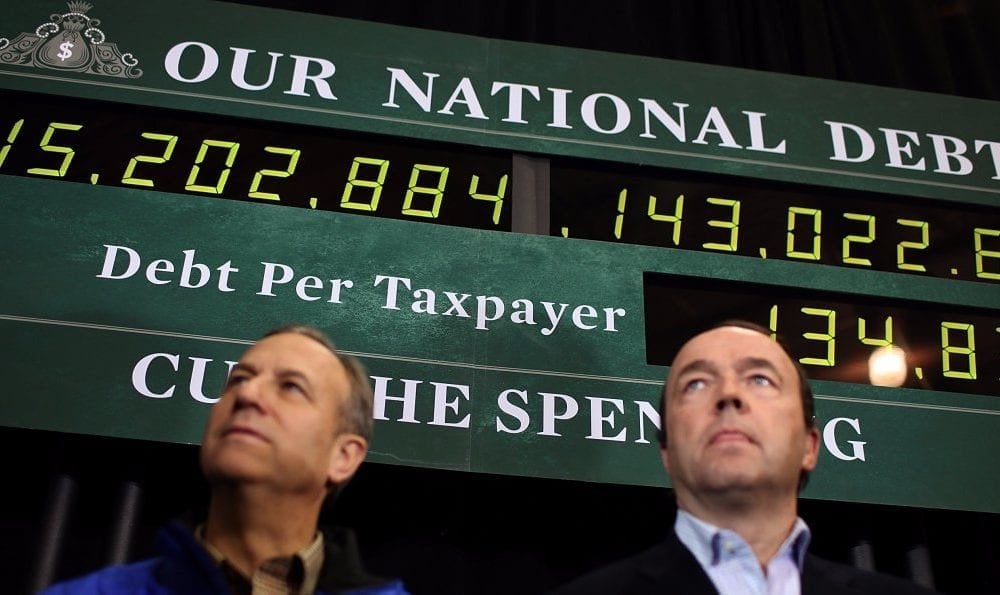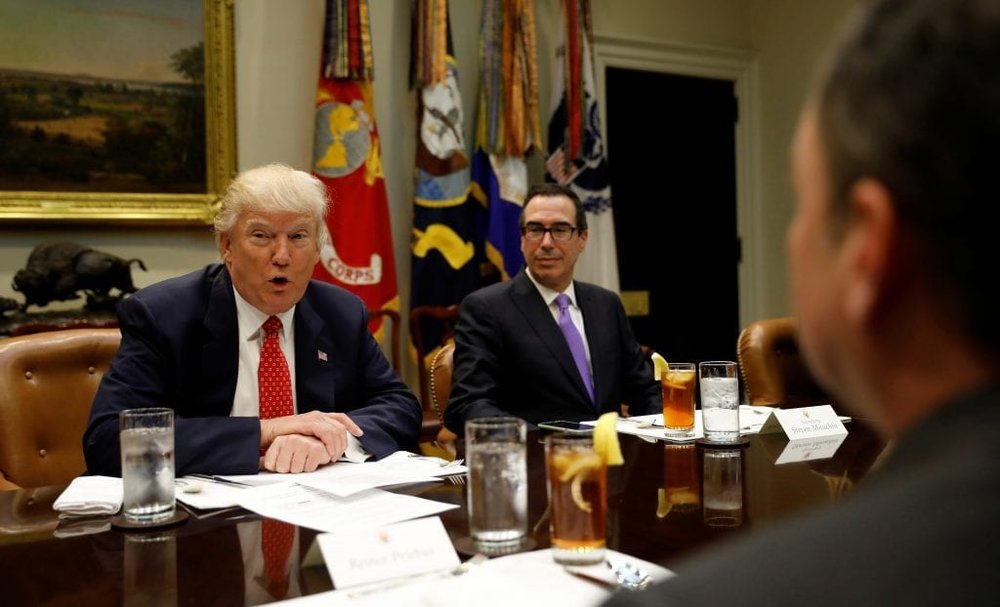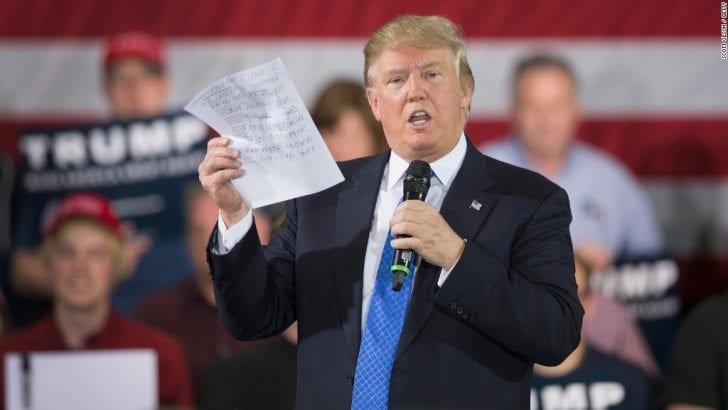
Despite Rhetoric, National Debt surpasses $21 trillion Mark under Trump’s Watch

It’s been a year now since President Trump vowed to eliminate the national debt over a period of 8 years. Just a year on from the pledge, one can certainly label his deliberations to have been whimsical at best.

The Committee for a Responsible Federal Budget estimates that over the next decade, the national debt is set to soar much higher. They opine that annual deficits could rise beyond $2.1 trillion on an annual basis.
The U.S. Treasury recently revealed that national debt has well and truly surpassed the $21 trillion mark. This revelation comes right after Congress passed with Trump’s approval, a suspension of federal debt limits last month. With the new legislation in place, the government is at will to borrow an unlimited amount of funds until March 1, 2019.
At the time of assumption of office on January 20th, 2017, the U.S. national debt stood at $19.9 trillion as per the U.S. Treasury data. In the year that has followed, the GOP (Grand Old Party) led Congress has passed tax cut bills amounting to $1.5 trillion. While at it, Congress also agreed to a two-year spending deal that promises to drive the deficit and debt much higher.
Economics at Play
In past regimes, more specifically during Obama’s reign at the helm, Republicans widely voiced their concerns on the fiscal state of the nation. The noise was loudest when the national debt rose from $10.6 trillion to $19.9 trillion, almost double the initial.
At present, not much has been heard from Republicans at Capitol Hill and in the White House. Republican Senator Rand Paul, recently voiced his disbelief while speaking on the Senate floor about the sudden change in tune. He expected the same criticism they accorded the Obama administration to be directed towards the present Trump administration.
A fellow Republican senator, Bob Corker, supported his notions through social media on Twitter. He cited the growing levels of national debt as the greatest impediment for the American nation.
Just how dangerous is the looming threat of growing national debt? It’s not quite clear at the moment. In September of last year, the President went on record saying that he was open to eliminating the debt ceiling entirely. The recent bills passed by Congress show a concerted effort by politicians to do this.
President Trump stated that there are a number of ‘good reasons’ for lifting the debt cap ceiling. The debt ceiling is a measure put in place by Congress that regulates just how much the federal government can borrow. Indeed, the president’s recent comments are in stark contrast to his previous stand on the matter of debt control.
At present, the federal government has been spending more money than it collects in taxes. Most of the surplus money gets borrowed from investors. In effect, this has led to the mountainous state of the national debt.
Worry

The last time the U.S. was debt free was in 1835. Given the vast amount of debt the country is in, it is quite unlikely that the country will be able to pay off its debt in entirety anytime soon.
Americans should be worried about recent happenings due to a number of factors. By borrowing in order to raise money, the federal government seems to be falling short. Instead, by refocusing their energies on comprehensive tax collection, the current national debt state would be much lower.
There’s also the other issue with borrowing, interest rates. Since the government is unlikely to finish paying off debts in time, the interest rates are likely to keep rising. Ever since the financial crisis, interest rates have been quite low. This has fostered a habitable environment for investors to lend money to the federal government.
Probable Solutions

Improved economic growth could provide investors with alternative options for investment. With a good economy in place, the United States could compete by offering improved higher interest rates.
Since debts accrued overtime need to be constantly repaid, the U.S has been losing. This is because the federal government has been offsetting debts by taking more debts. With time, this has led to compounding implications in terms of the state of national debt.
The only way out of this conundrum would probably be inflation and continued economic growth. The government can create a state of inflation by increasing the amount of money in circulation. In doing so, tax revenues are bound to increase, that way, the federal government will be better poised to pay off fixed debts.
With time, economic growth can help reduce interest burdens and cushion citizens from the current state of the national debt.
More inAdvice
-
`
Do Car Insurance Companies Offer Pay-As-You-Go Plans?
Car insurance premiums often feel unfair to people who rarely drive. Yet, most traditional auto policies still charge a fixed monthly...
July 17, 2025 -
`
Why the Koenigsegg Sadair Spear Is the Ultimate Hypercar Beast
Koenigsegg has revealed a new beast—the Sadair’s Spear. Tuning its focus on raw performance and brutal speed, this hypercar marks the...
July 11, 2025 -
`
Which States Have the Safest—and Riskiest—Drivers in America?
Driving safety isn’t just about skill. It’s also about location. A recent nationwide report shines a spotlight on where drivers are...
July 4, 2025 -
`
How to Save on Tesla Car Insurance Without Compromising Coverage
Owning a Tesla often brings savings on fuel and a futuristic driving experience, but the conversation changes quickly when it comes...
June 26, 2025 -
`
10 Weird Cars That Turned Heads and Won Hearts
Some cars turn heads with speed, others with luxury—but a rare few grab your attention simply by being delightfully strange. From...
June 20, 2025 -
`
Next-Gen Jeep Cherokee Expected to Arrive by Late 2025
After a break of two years, Jeep is prepared to relaunch the Cherokee brand. The automaker confirmed the return with fresh...
June 12, 2025 -
`
9 Tips to Make Night Driving Safer and Less Frightening
Once the sun dips below the horizon, driving becomes more than just a commute—it becomes a challenge. Limited visibility, harsh glares,...
June 6, 2025 -
`
The Impact of AI on Middle Management and Leadership Dynamics
Artificial intelligence is reshaping modern management practices. While intended to streamline tasks like approving time off or managing internal applications, its...
May 31, 2025 -
`
Car Insurance Rates Were Set to Fall—Then Tariffs Changed the Game
For many drivers, there was reason to hope for some relief on car insurance costs this year. After a strong performance...
May 25, 2025















You must be logged in to post a comment Login